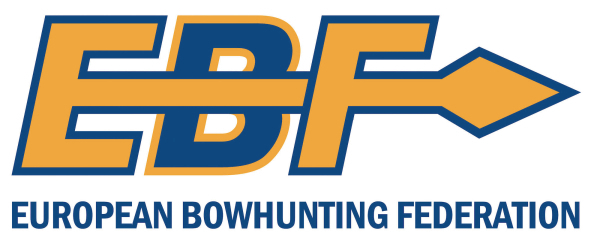
|
The European Bowhunting Federation (EBF) welcomes the recent Benelux Ministerial Decision M(2025)1, adopted on July 15th, 2025, as a major step forward toward sustainable and integrated game management. With this decision, all three Benelux countries, Belgium (including both Flanders and Wallonia), the Netherlands, and Luxembourg, are now authorized to include the bow and arrow as a legal hunting tool. This harmonized framework updates and replaces previous regulations, and formally recognizes the bow as a legitimate, safe, and efficient method for hunting, aligning with the approach of many European countries that have recently embraced bowhunting as part of their regulated wildlife management strategies.
Under an earlier Benelux decision, bowhunting was already legally permitted in Wallonia, where it has since been successfully implemented. With the adoption of Decision M(2025)1, the possibility now formally extends to Flanders, the Netherlands, and Luxembourg. Since the list of authorized hunting tools is determined at the Benelux level, this decision provides the necessary legal foundation for each member country or region to adopt bowhunting within their own national or regional hunting legislation, should they choose to do so.
“This Benelux decision is a big step forward for bowhunting in Europe and a clear recognition of the modern bow’s place in responsible wildlife management. It brings Benelux in line with developments across several EU countries in recent years and opens the door for authorities to authorise bowhunting under a robust, safety-first framework.” said Anders Gejer, President of the European Bowhunting Federation. “Where regions decide to make use of this option, EBF will continue to support them with recognised training, evidence-based guidance, and cooperation with stakeholders to ensure high standards in the field.”
The ministerial decision explicitly acknowledges the proven efficiency of the modern hunting bow.
The Benelux decision provides clear and detailed specifications for permissible arrow types, tailored to the specific game being hunted. These technical provisions are commendable for their precision and clarity, ensuring compliance with ethical hunting standards and the highest levels of animal welfare. They reflect a well-considered balance between safety, effectiveness, and responsible game management, cornerstones of present-day hunting governance.
This Benelux harmonization reflects a logical evolution among European countries that recognize the value of broadening their legal hunting toolset to include methods with distinct advantages. In addition to being a regular and effective hunting tool, the bow is quiet, precise, and highly controllable, qualities that make it particularly well-suited for use in areas where firearms may be less appropriate, such as urban or semi-urban environments.
These characteristics further underscore the bow’s suitability for hunting in or near recreational areas, where noise reduction and safety are paramount. In addition to its successful use in several Spanish and French peri-urban zones, the bow has also proven highly effective in ecologically sensitive nature reserves such as the Camargue in France, where bowhunters help manage wild boar populations with minimal environmental disruption.
Similarly, in the United States, the Audubon Society, the country's largest non-profit organization dedicated to bird conservation and habitat protection, has successfully engaged licensed bowhunters for over two decades in the Greenwich Audubon Center in Connecticut. This long-running program, coordinated with local and state authorities, has helped reduce overabundant white-tailed deer populations in forested sanctuaries, restoring native vegetation and protecting nesting grounds for vulnerable bird species. The above examples underscore the bow’s unique value as a precise, quiet, and ecologically responsible tool in sustainable game management.
Notably, the Danish Wildlife Management Council unanimously recommended that the Minister adopt bow and arrow hunting for sika, fallow, and red deer. This recommendation was supported by BirdLife Denmark, the Danish Society for Nature Conservation, and the Danish Animal Welfare Society. (source: https://mst.dk/nyheder/2023/august/mulighed-for-buejagt-paa-store-hjorte-udskydes )
Hunting with the bow has since many years been supported by the entire European hunting community through FACE, the European Federation for Hunting and Conservation, of which the EBF is a recognized associate member. In a statement FACE explicitly promotes bowhunting and affirms:
"FACE regards bow hunting as an equivalent alternative to hunting with firearms with its own characteristics. When hunters know and respect the limitations of the equipment they use and even more important of their own limitations, firearms and bows are placed on the same level as they comply with the two factors that enable a responsible shot. They are accurate and possess enough energy to take a lethal shot contrary to the prejudice of what some people still believe.." (source: https://www.face.eu/hunting-methods-culture/bowhunting/)
It is worth noting that the hunting bow is fully compatible with the principles of the EU Habitats Directive (92/43/EEC), particularly its objectives concerning the sustainable use of natural resources and the conservation of biodiversity, as also reflected in the EU Charter on Hunting and Biodiversity.
In most European countries, bowhunting is taught through structured and internationally recognized training programs. The European Bowhunting Federation (EBF) advocates for high standards in education, regulation, and ethics to ensure public confidence and responsible practice across all regions where bowhunting is permitted.
This commendable Benelux decision paves the way for the formal introduction of the bow as an additional tool in the legal hunting toolbox of Belgium, the Netherlands, and Luxembourg. While Wallonia already permitted bowhunting, this harmonized Benelux framework now enables Flanders, the Netherlands, and Luxembourg to follow suit. It gives national and regional authorities the legal foundation to authorize bowhunting under their own regulations, making it possible to incorporate the hunting bow alongside existing methods such as rifles and shotguns.
For further information, please contact:
European Bowhunting Federation (EBF)
President: Anders Gejer
Email: anders.gejer@europeanbowhunting.org www: https://europeanbowhunting.org/
References:
Benelux legal database: M(2025)1_FR, M(2025)1_NL
Notes to editors